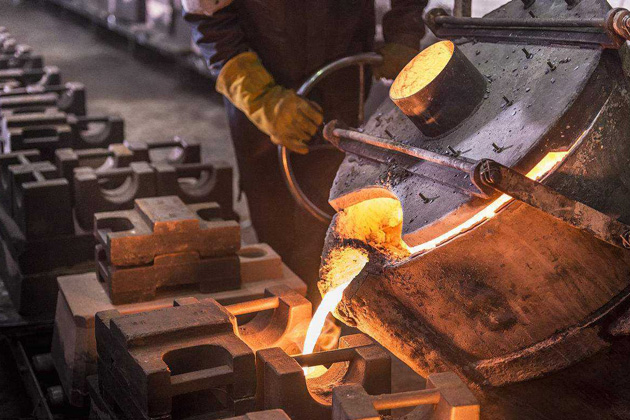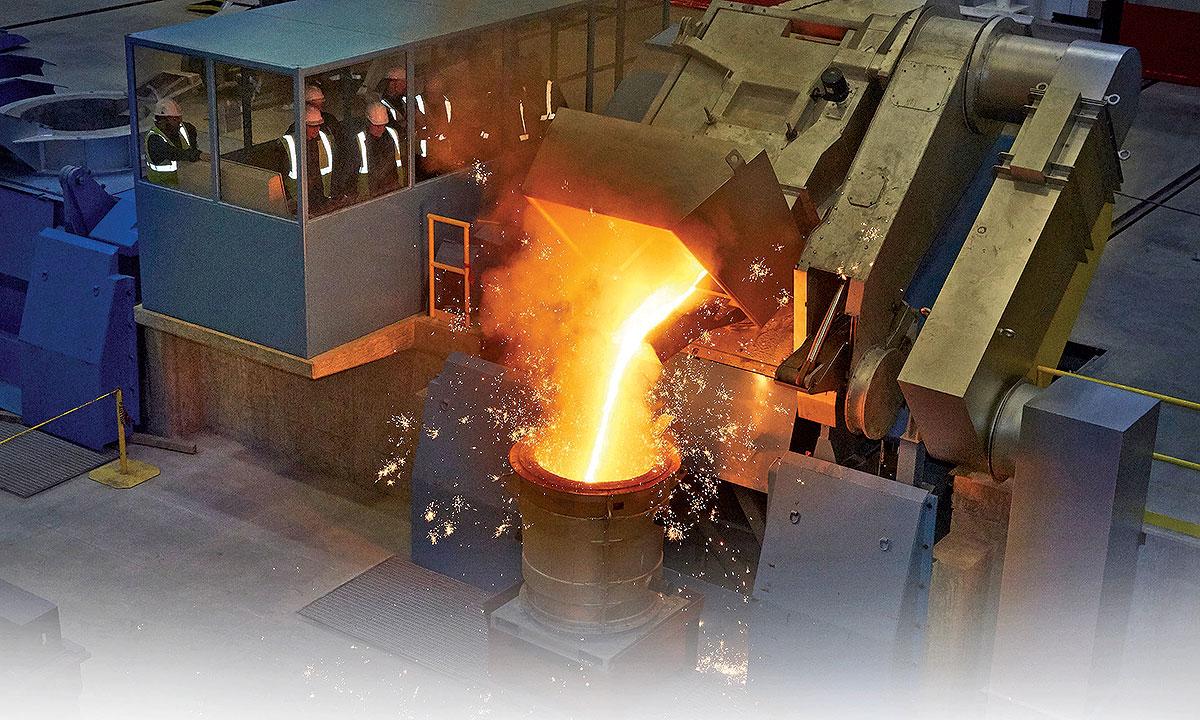Step-by-step guide of how a Metal Foundry turns raw materials into final cast products
Discover the Cutting-edge Methods Used in a Metal Foundry for Superior Casting Outcomes
In today's affordable manufacturing landscape, metal foundries are increasingly taking on cutting-edge strategies to boost spreading outcomes - Metal Foundry. Advanced computer simulations permit exact modeling of molten metal habits, while 3D printing enables fast production of intricate molds. Additionally, green products and automation streamline operations. These developments promise significant enhancements in performance and quality control. Nonetheless, the effect of these technologies on sustainability and production practices stays to be completely checked out
Advanced Computer System Simulations in Metal Casting
Advanced computer system simulations have actually revolutionized the metal spreading procedure by boosting accuracy and performance. These innovative tools enable engineers to create online designs of actors elements, enabling them to forecast the habits and analyze of molten metal during the casting stage. By simulating different specifications such as temperature, flow rate, and cooling rates, makers can recognize prospective issues prior to physical manufacturing begins.
This aggressive method decreases waste and lessens pricey errors, ultimately bring about enhanced item high quality. Furthermore, simulations assist in the optimization of mold and mildew styles, ensuring that they fulfill the particular needs of each job. The assimilation of computational fluid characteristics (CFD) and limited aspect evaluation (FEA) more adds to the precision of these simulations, offering understandings that were previously unattainable. Because of this, advanced computer system simulations have actually come to be an important part of contemporary metal foundries, greatly advancing the industry's abilities.
3D Printing for Molds and Patterns
3D printing has become a groundbreaking strategy for creating molds and patterns in the metal foundry market. This innovation allows the quick manufacturing of complex geometries that standard manufacturing approaches battle to attain. By using additive production, foundries can create complex styles with reduced preparations and product waste. The capacity to create molds as needed permits greater adaptability in style iterations, promoting faster prototyping and alterations.
3D printing can utilize a range of products, including plastics and steels, tailored to specific casting needs. This adaptability improves the precision of molds, causing premium casting end results with improved surface coatings. Furthermore, the decrease in the variety of components needed streamlines setting up processes, additionally maximizing manufacturing effectiveness. As foundries continue to adopt 3D printing, they are positioned to redefine industry requirements, leading the way for advancement and boosted performance in metal spreading operations.
Eco-Friendly Materials and Processes
As the metal foundry industry encounters enhancing pressure to decrease its ecological footprint, the fostering of environmentally friendly products and processes has become necessary. Factories are now discovering lasting alternatives to conventional materials, such as making use of bio-based binders and recycled metals. These products not only reduce waste yet likewise lower power usage during manufacturing.
Furthermore, innovations in sand spreading methods have actually led to making use of synthetic sands that are much less harmful to the atmosphere. Factories are likewise carrying out cutting-edge processes like liquified metal treatment that minimizes exhausts and enhances the high quality of cast items.
Water-based coatings have actually changed harmful solvents, advertising a safer work setting. By incorporating these eco-friendly methods, metal foundries can substantially lower their environmental effect while keeping high-grade spreading results. This change not just benefits the environment however also straightens with the expanding customer demand for sustainable manufacturing remedies
Automation and Robotics in Foundry Procedures
While the metal foundry industry welcomes technology, the integration of automation and robotics is transforming procedures significantly. Automated systems enhance procedures such as check that mold making, metal pouring, and casting finishing, greatly enhancing effectiveness. Robotics promote the handling of hefty materials, lowering the danger of office injuries and ensuring much safer settings.

Better, the use of automated guided vehicles (AGVs) optimizes product transportation within facilities, making certain timely distribution of elements to ideal workstations. By applying these technologies, foundries can adapt to fluctuating needs with better dexterity, eventually resulting in improved productivity and competition in the marketplace. As automation and robotics continue to evolve, they hold the possible to redefine conventional foundry practices and drive additional developments in casting methods.
Real-Time Monitoring and Quality Assurance Techniques
The developments in automation and robotics have actually led the way for more sophisticated strategies to high quality assurance in metal foundries. Real-time surveillance systems use advanced sensing units and data analytics to track critical specifications throughout the spreading process. These systems continuously evaluate variables such as pressure, material, and temperature composition, making it possible for you can try these out instant detection of discrepancies from developed requirements.
Quality control strategies currently integrate artificial intelligence formulas that assess historical information to predict prospective flaws before they take place. This proactive technique decreases waste and boosts total manufacturing efficiency. Furthermore, integrated feedback loopholes permit rapid modifications, making certain that each spreading satisfies stringent high quality requirements.
The execution of electronic twins-- online replicas of physical possessions-- has likewise changed top quality guarantee, permitting engineers to replicate and enhance procedures in real-time. With each other, these ingenious methods greatly boost the reliability and high quality of spreadings, establishing new industry standards in metal foundry operations.
Regularly Asked Inquiries
What Types of Metals Are Commonly Cast in Foundries?
Frequently cast metals in foundries consist of aluminum, iron, bronze, and brass. Each metal exhibits unique residential properties, making them appropriate for numerous applications, such as auto parts, machinery, and artistic sculptures, improving their flexibility in manufacturing.

How much time Does the Casting Refine Generally Take?
The casting procedure normally takes numerous hours to days, relying on elements such as the intricacy of the mold and mildew, kind of metal official statement used, and air conditioning requirements. Each phase influences the total duration markedly.
What Precaution Are in Location for Foundry Workers?

How Are Problems in Castings Identified and Addressed?
Issues in spreadings are identified with aesthetic evaluations and non-destructive testing approaches. As soon as identified, foundry workers resolve them by refining procedures, readjusting material make-ups, and applying rehabilitative steps to guarantee top quality and compliance with criteria.
What Is the Price Variety for Metal Casting Providers?
The expense variety for metal casting solutions usually ranges $1 to $10 per extra pound, relying on variables such as product kind, intricacy of the layout, and production volume, affecting total prices substantially.
In today's affordable production landscape, metal foundries are significantly embracing innovative methods to enhance casting results. As the metal foundry sector encounters boosting pressure to lower its environmental impact, the fostering of environmentally friendly products and processes has become essential. Shops are now exploring sustainable choices to standard materials, such as utilizing bio-based binders and recycled steels. By incorporating these environmentally friendly practices, metal foundries can substantially decrease their eco-friendly impact while preserving high-grade spreading results. The improvements in automation and robotics have actually led the means for more sophisticated strategies to top quality guarantee in metal foundries.